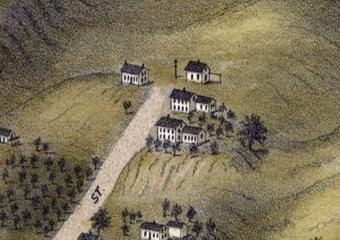Michael R. H. Swanson, Ph. D.
Office: CAS 110
Hours: M, F, 9:00-10:00
T, Th 11:--12:30 or by appointment
Phone: 254 3230
In this chapter, Wood questions whether our picture of 18th century domestic architecture is accurate. If not, what did the average 18th century house look like? As one might expect, wealth and length of community settlement determines the answer. I don't expect you to master all the technical statistics in this chapter, so don't let them overwhelm you. Do concentrate on the descriptive data on the range of house size and house value (pp. 74-78).
